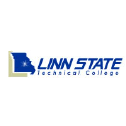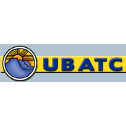What do they do?
Set up or repair rigging for construction projects, manufacturing plants, logging yards, ships and shipyards, or for the entertainment industry.
Also known as:
Gantry Rigger, Hand Rigger, Heavy Lift Rigger, Machinery Erector, Machinery Mover, Marine Rigger, Motor Rigger, Rigger, Rigging Fabricator, Ship Rigger
-
0%
Change
Ranks #44 in job growth rate20Job Openings
Ranks #33 in net job growth
Looking for colleges that offer a specific major? Use the College Match Tool to find your best-matched schools and discover your estimated Net Price!
- High school diploma equivalent (56%)
- Some college, no degree (20%)
- Bachelor's degree (10%)
- Less than high school diploma (7%)
- Associate's degree (5%)
- Master's degree (2%)
- Doctorate or Professional Degree (<1%)
Most Popular Majors that prepare Riggers
-
#1
-
Degrees Granted
1,983
-
Female Students
236
-
Male Students
1,747
-
Median Starting Salary
$55,200
-
-
#2
-
Degrees Granted
631
-
Female Students
41
-
Male Students
590
-
Median Starting Salary
$47,900
-
-
#3
-
Degrees Granted
80
-
Female Students
13
-
Male Students
67
-
Median Starting Salary
$55,200
-
-
#4
-
Degrees Granted
61
-
Female Students
7
-
Male Students
54
-
Median Starting Salary
$55,200
-
-
#5
-
Degrees Granted
21
-
Female Students
2
-
Male Students
19
-
Median Starting Salary
$55,200
-
People in this career often know a lot about:
- Mechanical - Knowledge of machines and tools, including their designs, uses, repair, and maintenance.
- Public Safety and Security - Knowledge of relevant equipment, policies, procedures, and strategies to promote effective local, state, or national security operations for the protection of people, data, property, and institutions.
- Production and Processing - Knowledge of raw materials, production processes, quality control, costs, and other techniques for maximizing the effective manufacture and distribution of goods.
- Customer and Personal Service - Knowledge of principles and processes for providing customer and personal services. This includes customer needs assessment, meeting quality standards for services, and evaluation of customer satisfaction.
- Administration and Management - Knowledge of business and management principles involved in strategic planning, resource allocation, human resources modeling, leadership technique, production methods, and coordination of people and resources.
- Design - Knowledge of design techniques, tools, and principles involved in production of precision technical plans, blueprints, drawings, and models.
- English Language - Knowledge of the structure and content of the English language including the meaning and spelling of words, rules of composition, and grammar.
People in this career often have talent in:
- Problem Sensitivity - The ability to tell when something is wrong or is likely to go wrong. It does not involve solving the problem, only recognizing that there is a problem.
- Control Precision - The ability to quickly and repeatedly adjust the controls of a machine or a vehicle to exact positions.
- Multilimb Coordination - The ability to coordinate two or more limbs (for example, two arms, two legs, or one leg and one arm) while sitting, standing, or lying down. It does not involve performing the activities while the whole body is in motion.
- Near Vision - The ability to see details at close range (within a few feet of the observer).
- Depth Perception - The ability to judge which of several objects is closer or farther away from you, or to judge the distance between you and an object.
People in this career often do these activities:
- Test mechanical systems to ensure proper functioning.
- Communicate with coworkers to coordinate installations or repairs.
- Operate cranes, hoists, or other moving or lifting equipment.
- Move materials, equipment, or supplies.
- Determine types of equipment, tools, or materials needed for jobs.
- Dismantle heavy equipment or machinery.
- Attach rigging to objects so they can be moved.
- Align equipment or machinery.
- Load materials or equipment.
- Clean equipment, parts, or tools to repair or maintain them in good working order.
This page includes data from:

 Occupation statistics: USDOL U.S. Bureau of Labor Statistics Occupational Employment Statistics
Occupation statistics: USDOL U.S. Bureau of Labor Statistics Occupational Employment Statistics
 Videos: CareerOneStop, USDOL/ETA and the Minnesota Department of Employment & Economic Development
Videos: CareerOneStop, USDOL/ETA and the Minnesota Department of Employment & Economic Development













